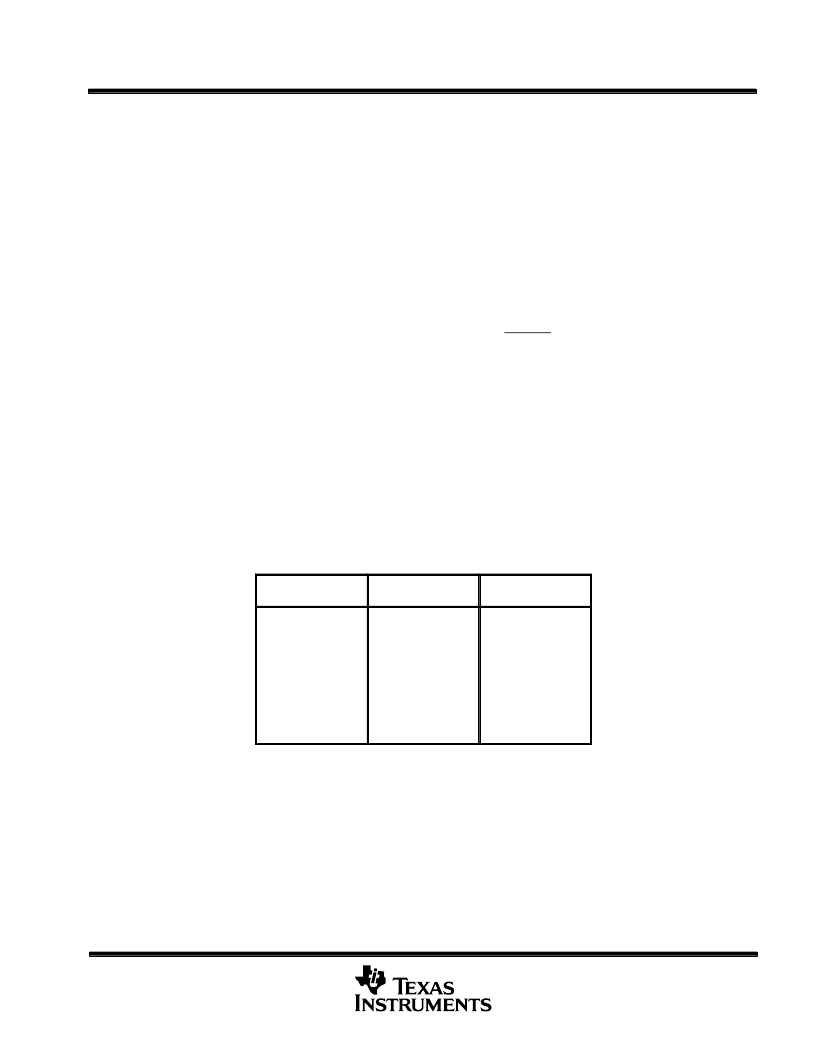- 您現(xiàn)在的位置:買賣IC網(wǎng) > PDF目錄384021 > TMS320AV220 (Texas Instruments, Inc.) Video CD MPEG Decoder(視頻CD MPEG編碼器) PDF資料下載
參數(shù)資料
| 型號(hào): | TMS320AV220 |
| 廠商: | Texas Instruments, Inc. |
| 英文描述: | Video CD MPEG Decoder(視頻CD MPEG編碼器) |
| 中文描述: | 視頻CD MPEG解碼器(視頻光盤的MPEG編碼器) |
| 文件頁數(shù): | 17/31頁 |
| 文件大小: | 612K |
| 代理商: | TMS320AV220 |
第1頁第2頁第3頁第4頁第5頁第6頁第7頁第8頁第9頁第10頁第11頁第12頁第13頁第14頁第15頁第16頁當(dāng)前第17頁第18頁第19頁第20頁第21頁第22頁第23頁第24頁第25頁第26頁第27頁第28頁第29頁第30頁第31頁

TMS320AV220
VIDEO CD MPEG DECODER
SCSS016A – JUNE 1994 – REVISED JANUARY 1996
17
POST OFFICE BOX 655303
DALLAS, TEXAS 75265
digital-video standards
There are two primary standards for analog-video transmission commonly used: National Television Systems
Committee (NTSC) standard and Phase Alternating Line (PAL) standard. The common interchange format
(CIF) specification reflects these standards by defining two digital-video formats: 352 pixels
×
240 lines
×
30 Hz
for compatibility with the NTSC standard and 352 pixels
×
288 lines
×
25 Hz for compatibility with the PAL
standard. Because the CIF frame rates are half those of the standard field rates, the ’AV220 displays each
decoded CIF picture nominally for two field periods.
video-display unit
The purpose of the video-display unit is to output the decompressed-video data in a form that can be displayed
on either a television or a video monitor. To perform these functions, the ’AV220 video-display unit horizontally
interpolates decompressed video, converts pixel data from YCbCr to the RGB color space, synchronizes it to
the video clock, and outputs it to a display device. The pixels are clocked out by the video clock (VCLK) signal
and are synchronized to external devices using the horizontal sync (HSYNC) and vertical sync (VSYNC) signals.
In accordance with the MPEG standard, video is compressed using the YCbCr format with Y values ranging from
16 to 235. The ’AV220 automatically converts the YCbCr data to RGB using a matrix that preserves the 220
discrete levels encoded by MPEG, in which 16-16-16 RGB indicates the color black, and 235-235-235 indicates
the color white. The equations used to convert to RGB maintain CCIR 601 chromaticity and are as follows:
Red = Y + 1.402
×
Cr
Blue = Y + 1.772
×
Cb
Green = Y – .334
×
Cb – .714
×
Cr
The video-display unit can also be programmed to output PD23–PD0 using the YCbCr format. The following
steps must be followed after each reset to configure the ’AV220 to output YCbCr.
1.
Poll register at address 2056h until bit 0 is 0.
2.
Once a zero is read, the following ten writes must be performed in the order shown below.
WRITE
NUMBER
ADDRESS
DATA
1
2
3
4
5
6
7
8
9
10
2088
2089
208C
208D
2088
2089
208C
208D
2056
2057
00
00
11
01
01
00
00
00
01
00
3.
The ’AV220 now outputs pixel data in the YCbCr color space.
Figure 3 shows the video-bus connections.
相關(guān)PDF資料 |
PDF描述 |
|---|---|
| TMS320AV410 | Digital NTSC/PAL Encoder(數(shù)字NTSC/PAL編碼器) |
| TMS320AV411 | Digital NTSC/PAL Encoder(數(shù)字NTSC/PAL編碼器) |
| TMS320AV420 | Digital NTSC Encoder(數(shù)字NTSC編碼器) |
| TMS320C6424_1 | Fixed-Point Digital Signal Processor |
| TMS320C6455ZTZ | Fixed-Point Digital Signal Processor |
相關(guān)代理商/技術(shù)參數(shù) |
參數(shù)描述 |
|---|---|
| TMS320AV220PCM | 制造商:未知廠家 制造商全稱:未知廠家 功能描述:Audio/Video Decoder for MPEG |
| TMS320AV410 | 制造商:未知廠家 制造商全稱:未知廠家 功能描述:Color Encoder Circuit |
| TMS320AV410PJM | 制造商:Rochester Electronics LLC 功能描述:- Bulk |
| TMS320AV411 | 制造商:未知廠家 制造商全稱:未知廠家 功能描述:Color Encoder Circuit |
| TMS320AV411PJM | 制造商:Rochester Electronics LLC 功能描述:- Bulk 制造商:Texas Instruments 功能描述: |
發(fā)布緊急采購,3分鐘左右您將得到回復(fù)。